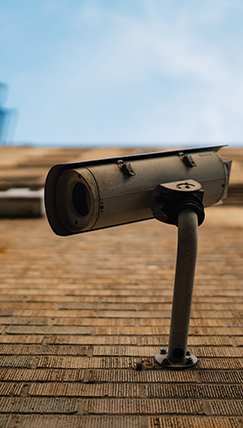IP & CCTV System
IP & CCTV System is the ideal system to protect the property as well as a visual deterrent, network video recorder (NVR) & digital video recording acts as a useful reference in the event of crime taking place.
In a CCD for capturing images, there is a photoactive region, and a transmission region made out of ashift register.
An image is projected through a lens onto the capacitor array (the photoactive region), causing each capacitor to accumulate an electric charge proportional to the light intensity at that location. A one-dimensional array, used in line-scan cameras, captures a single slice of the image, whereas a two-dimensional array, used in video and still cameras, captures a two-dimensional picture corresponding to the scene projected onto the focal plane of the sensor. Once the array has been exposed to the image, a control circuit causes each capacitor to transfer its contents to its neighbor (operating as a shift register). The last capacitor in the array dumps its charge into a charge amplifier, which converts the charge into a voltage. By repeating this process, the controlling circuit converts the entire contents of the array in the semiconductor to a sequence of voltages. In a digital device, these voltages are then sampled, digitized, and usually stored in memory; in an analog device, they are processed into a continuous analog signal (e.g. by feeding the output of the charge amplifier into a low-pass filter, which is then processed and fed out to other circuits for transmission, recording, or other processing.
Now IP Camera,
An Internet protocol camera, or IP camera, is a type of digital video camera commonly employed for surveillance, and which, unlike analog closed circuit television (CCTV) cameras, can send and receive data via a computer network and the Internet. Although most cameras that do this are webcams, the term "IP camera" or "netcam" is usually applied only to those used for surveillance. The first centralized IP camera was Axis Neteye 200, released in 1996 by Axis Communications.
There are two kinds of IP cameras:
- Centralized IP cameras, which require a central network video recorder (NVR) to handle the recording, video and alarm management.
- Decentralized IP cameras, which do not require a central NVR, as the cameras have recording function built-in and can thus record directly to any standard storage media, such as SD cards, NAS or a PC/server.

